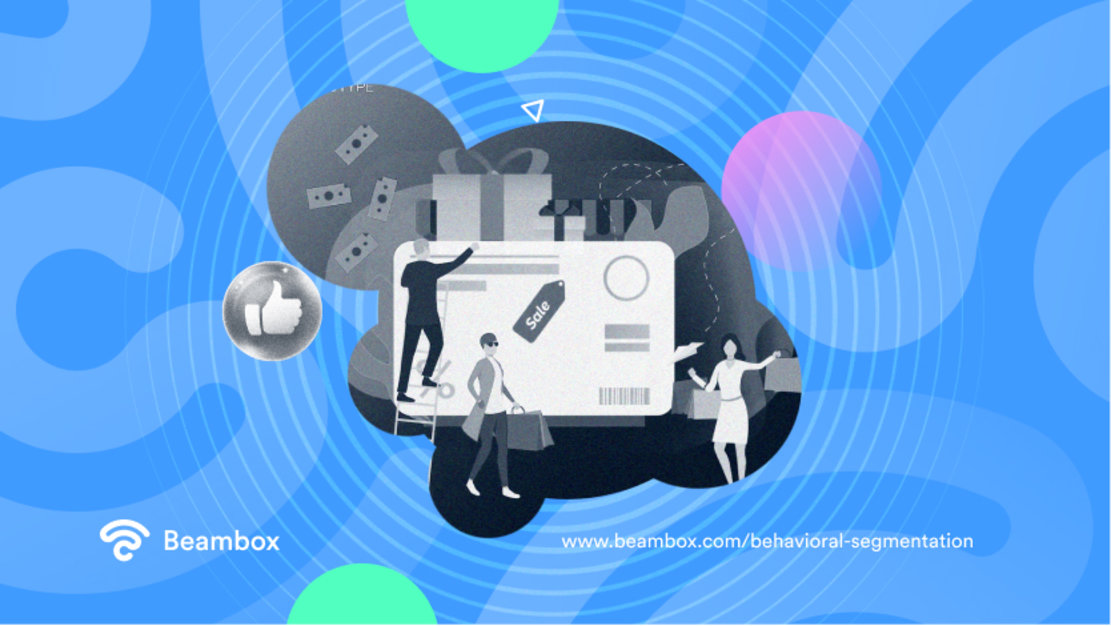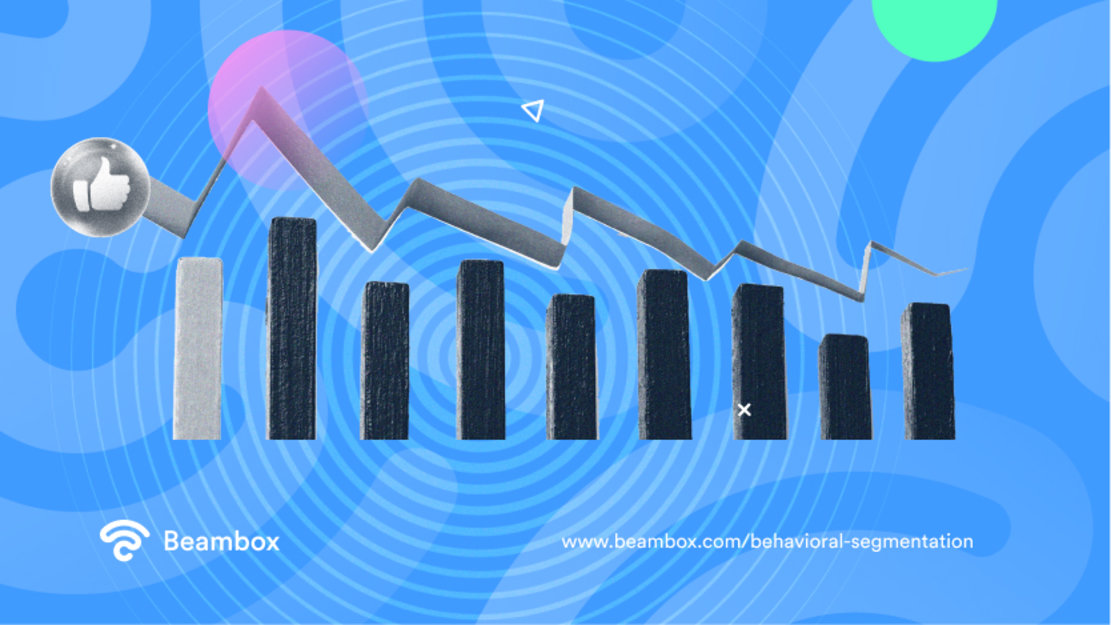Behavioral Segmentation: Everything You Should Know
Are you tired of generic marketing strategies that fail to resonate with your target audience? If so, it’s time to harness the power of behavioral segmentation. In this article, you’ll learn what behavioral segmentation is. Moreover, you will see how small businesses can leverage this approach to drive more meaningful customer interactions.
So buckle up, and get ready to discover the power of behavioral segmentation in targeted marketing!
What Is Behavioral Segmentation?

Behavioral segmentation is a market research approach that categorizes consumers based on their actions. As you might expect, it is similar to psychographic segmentation. There’s plenty of overlap between the two. However, the former is more quantitative and more practical.
Marketers use behavioral segmentation to analyze customers’ actions and behaviors to identify patterns and trends. Then, they use this information to develop marketing strategies that resonate with specific types of consumers.
For example, let’s say you’re a fairly typical small business owner. You’re looking for ways to grow your revenue, and you want to reach out to a broader audience. You might categorize your customers into one of two groups using behavioral segmentation. Group A consists of customers who visit your site once a month. Group B consists of customers who visit your site at least twice a month.
You could develop two different types of marketing messages after establishing these categories. We would design one message for customers in Group A and another for Group B. You could then tailor your marketing efforts around each of these groups and use your message to drive more targeted and meaningful interactions with your customers.
Why Behavioral Segmentation in Marketing Is Important for Small Businesses

Behavioral segmentation in marketing is a unique and valuable approach to every marketing campaign. It can improve the effectiveness of your marketing programs and help your products and services reach more customers.
You can target customers with a more meaningful message by implementing this type of segmentation. Depending on your marketing goals, this approach can help you increase leads, generate sales, close deals, and more.
The key to behavioral segmentation in marketing is identifying meaningful patterns and trends among your customers. Doing this can create a more targeted marketing message that resonates with your customer’s needs and desires.
As a small business owner seeking new customers, you can use behavioral segmentation to identify specific groups of consumers with common interests. With this information, you can create a custom marketing message that speaks to those shared interests and behaviors. Moreover, this will increase the chance of making loyal customers for your business.
Behavioral Segmentation Examples To Find Inspiration

There are several behavioral segmentation examples to create more effective marketing strategies.
A typical example of behavioral segmentation is usage rate. It involves categorizing customers on how frequently they use a particular product or service.
For instance, if you own a local pizza shop, you might identify customers who come into your business every week, every few weeks, every month, and so forth.
Consumer lifestyles provide another example. How customers spend their time and money forms the basis of this segmentation. It might be things like marital status, number of children, or number of pets.
This is just a tiny sampling of behavioral segmentation examples. While you might not use one of these in your own business, they do serve to illustrate the process.
If you plan to implement behavioral segmentation in your marketing or sales strategy, you must consider dividing lines between your customers. What actions and behaviors do they all share? How do these actions and behaviors differ?
Once you identify these patterns and trends, you can use them to build targeted marketing campaigns. For example, you can craft email marketing campaigns that meet your customers’ desires.
And remember, behavioral segmentation is a continuous process. You should closely monitor your customers’ behavior patterns and update your segmentation strategy accordingly.
Most Useful Behavioral Segmentation Variables

Understanding customers’ behavior is essential for any successful business strategy in today’s crowded marketplace. And that’s where behavioral segmentation variables come into play.
Read below to discover different behavioral segmentation variables, their characteristics, and how to apply them to your business.
-
Purchase Behavioral Segmentation Variable. Includes the characteristics of a customer who purchases the product. In this variable, you differentiate the customers based on factors like the price and the quantity of the products they buy.
-
Usage Variable. Includes the characteristics of a customer who uses the product often. The usage behavioral segmentation variable allows you to tell customers who purchase the product once and then never again from those who are buying the product often.
-
Time Behavioral Segmentation Variable. Includes the characteristics of a customer who spends time on the product. The time behavioral segmentation variable helps you to identify how much time a customer takes to convert into a paying customer. It is pretty similar to the end conversion behavioral variable.
-
Psychographic Behavioral Segmentation Variable. It includes the characteristics of a customer’s behavior or personality. These preferences may largely depend on factors such as the customer’s interests, beliefs, or values.
-
Location/Geographical Variable. Includes features on where a customer lives or acts. The location behavioral segmentation variable allows you to market the product differently based on the customer’s location.
As a small business owner, you often want to know if your business could be more profitable. Getting a clear picture of your customers through these behavioral segmentation variables is vital.
4 Benefits of Behavioral Segmentation
The benefits of behavioral segmentation are astounding; if done well, it can significantly improve your results and revolutionize your business in a way that may surprise even you.
Here are some of the benefits that might be interesting to know.
#1 Improved Customer Understanding
With behavioral segmentation, you can categorize your customers based on their behavior. This is valuable as it helps you better understand who your customers are and what they want from your business. When you have a solid knowledge of your customers, you can successfully implement any type of initiative. Even guerrilla marketing.
#2 Improved Marketing Campaigns
Marketing campaigns explicitly aimed at specific groups of customers will be more successful and effective than those aimed at the general public. Behavioral segmentation can help you develop marketing messages and campaigns that speak directly to your customers’ needs and desires.
#3 More Effective Product Development
Behavioral segmentation can be an excellent tool for product development. You can identify areas you need to improve by analyzing your customers’ behavior patterns. You can also bring in potential customers early in the product development process to help determine what they value and what they would find useful.
#4 Improved Sales

When you have insights into the needs and desires of your target customers, you can develop sales strategies tailored to their desires. Behavioral segmentation can help you better identify potential customers and understand their needs. This will also help you reduce the marketing churn rate.
How To Implement Behavioral Segmentation in Your Business
To succeed with behavioral segmentation in your business, you need to do several things. These will ensure your business resonates with your customers and your audience remains loyal to your brand. Here are some strategies to implement behavioral segmentation in your business that will take your marketing game to the next level.
#1 Understand Your Audience for Behavioral Segmentation
Before you can implement behavioral segmentation in your business, you need to understand your audience. Create personas by interviewing potential customers to identify your audience better.
Once you understand your audience, you can start breaking things down. Divide your audience into smaller groups based on behavioral segmentation variables.
For example, you can divide your audience into groups based on their purchasing behavior, usage behavior, times behavior, and so on. You can better tailor your marketing messages for a specific audience by getting to know your audience and their needs.
#2 Use Data for Behavioral Segmentation
Use data and statistical analysis to help you build your behavioral segmentation strategy. You can pinpoint patterns and trends by gathering data through market research and customer surveys.
These patterns and trends will give you valuable insight into your customers’ behavior and needs. Using WiFi marketing software can speed up the process of gathering data from actual customers.
#3 Create Targeted Campaigns for Behavioral Segmentation
Once you have segmented your audience based on behavior, you can create targeted marketing campaigns that speak to each group’s specific needs and desires.
For example, if you have identified a group of financially sensitive customers, you can create campaigns focusing on promotions or discounts. Likewise, if you have identified a group of customers who are conscious of quality, you can create campaigns emphasizing your product’s or service’s premium features.
#4 Monitor and Adjust Your Behavioral Segmentation Efforts

Finally, it’s important to monitor the effectiveness of your behavioral segmentation efforts and adjust your strategies as needed. Use analytics and customer feedback to track your campaigns’ success and make necessary changes to meet your audience’s needs better.
By continually monitoring and adjusting your approach, you can ensure that your business always provides the best possible customer experience. Feel free to utilize this HubSpot tool to identify and reach your most relevant audience.
Potential Pitfalls and Risks of Reliance on Behavioral Segmentation
Behavioral segmentation is a valuable tool that can help businesses better understand their customers and tailor their marketing efforts to meet their needs and desires.
However, certain pitfalls and risks, such as the following, may undermine the effectiveness of behavioral segmentation.
#1 Overlooking Behavioral Segmentation Variables
It’s easy for businesses to overlook behavioral segmentation variables. After all, not all customers will have the same demographic and psychographic characteristics.
Sometimes, the only way to identify and understand customers’ behavior patterns is to go out and observe and talk to them.
#2 Taking Behavioral Segmentation Too Far
Behavioral segmentation is a useful marketing tool, but it’s important to remember that it’s just that, a tool.
If a business doesn’t sell a product or service that appeals to a particular group of customers, there’s no point in targeting that group with marketing efforts.
For example, behavioral segmentation strategies might not be all that effective if a business fails to develop a product or service that meets the needs and desires of particular groups of customers.
3 Proven Methods To Improve Your Behavioral Segmentation
Refining your behavioral segmentation strategy should continually be a process of improvement. Even if you have a behavioral segmentation strategy in place, you should continually ask yourself if it’s still relevant and working for your business.
You should also question if it is still targeting the right customers and providing them with the right message. Here are some proven methods to improve your segmentation strategy and get more success with your marketing efforts.
#1 Maintain Your Perspective
Remember that behavioral segmentation is just one marketing technique. Instead of taking a “cookie cutter” approach to marketing, keep your perspective and look for the best ways to appeal to the customer.
#2 Use Multiple Data Sources To Increase the Accuracy of Your Behavioral Segmentation
Behavioral segmentation variables are often difficult to identify.
You can increase the accuracy of your behavioral segmentation by using multiple data sources. For example, you can use combinations of social media postings, focus groups, customer surveys, and external surveys to get a complete picture of your customers.
The Bottom Line
Behavioral segmentation is a valuable tool that can help you drive more meaningful interactions with your customers and help you reach a larger audience of potential customers. It’s a process that’s easy to apply, and the benefits you’ll gain can be significant if used correctly.
When it comes to gathering data about your actual customers, there’s no better way than using a social WiFi hotspot like Beambox.
Beambox is an effective but affordable WiFi marketing solution that helps you collect data about your customers when they connect to your internet. You will learn what your customers like and expect from your business. Moreover, you can automate your marketing strategy and secure your WiFi with just a few clicks.
For example, you can increase your rating on local review sites with automatic prompts that ask your customer to write a review about your business. Or else, you can increase brand awareness by creating a captive portal that matches your venue’s vibes.
With Beambox, you have plenty of ways to increase the effectiveness of your marketing and improve the customer experience at your venue.
Twelve thousand businesses use Beambox to learn about their customers and create effective marketing strategies. Do you want to be next? Start your 30-day free trial now.
Get Started With Free WiFi Marketing
Beambox helps businesses like yours grow with data capture, marketing automation and reputation management.
Sign up for 30 days free


